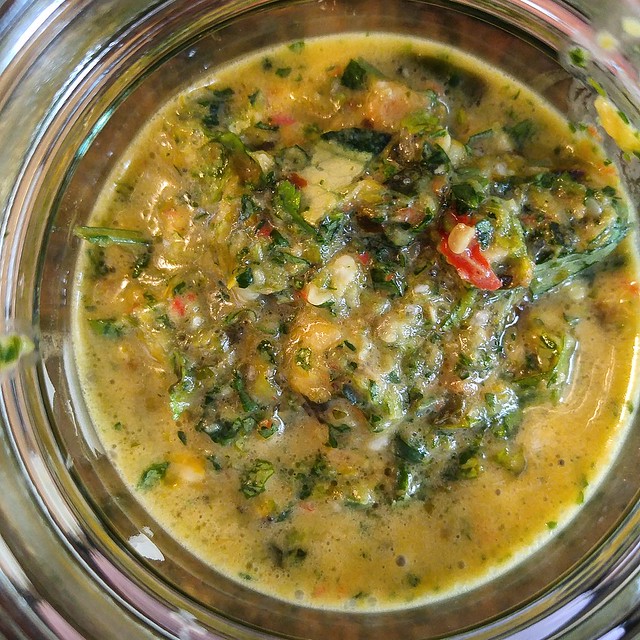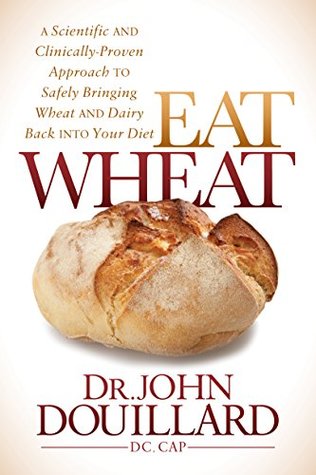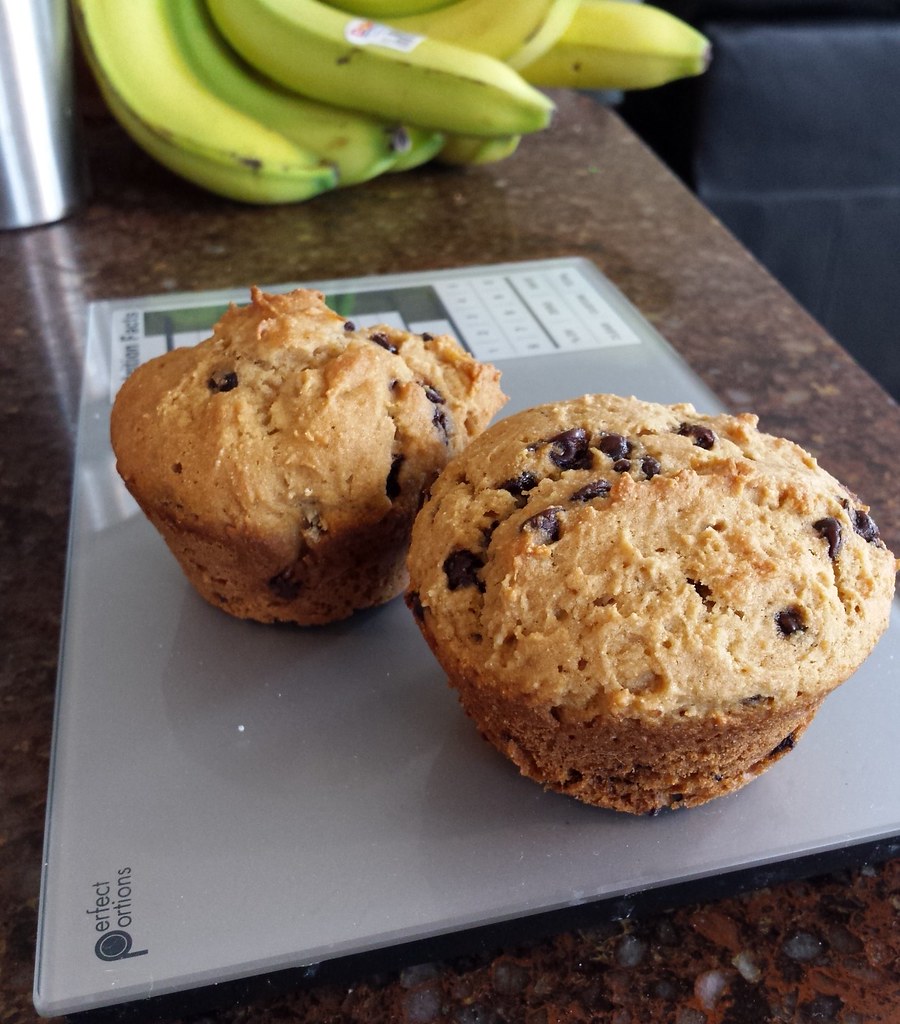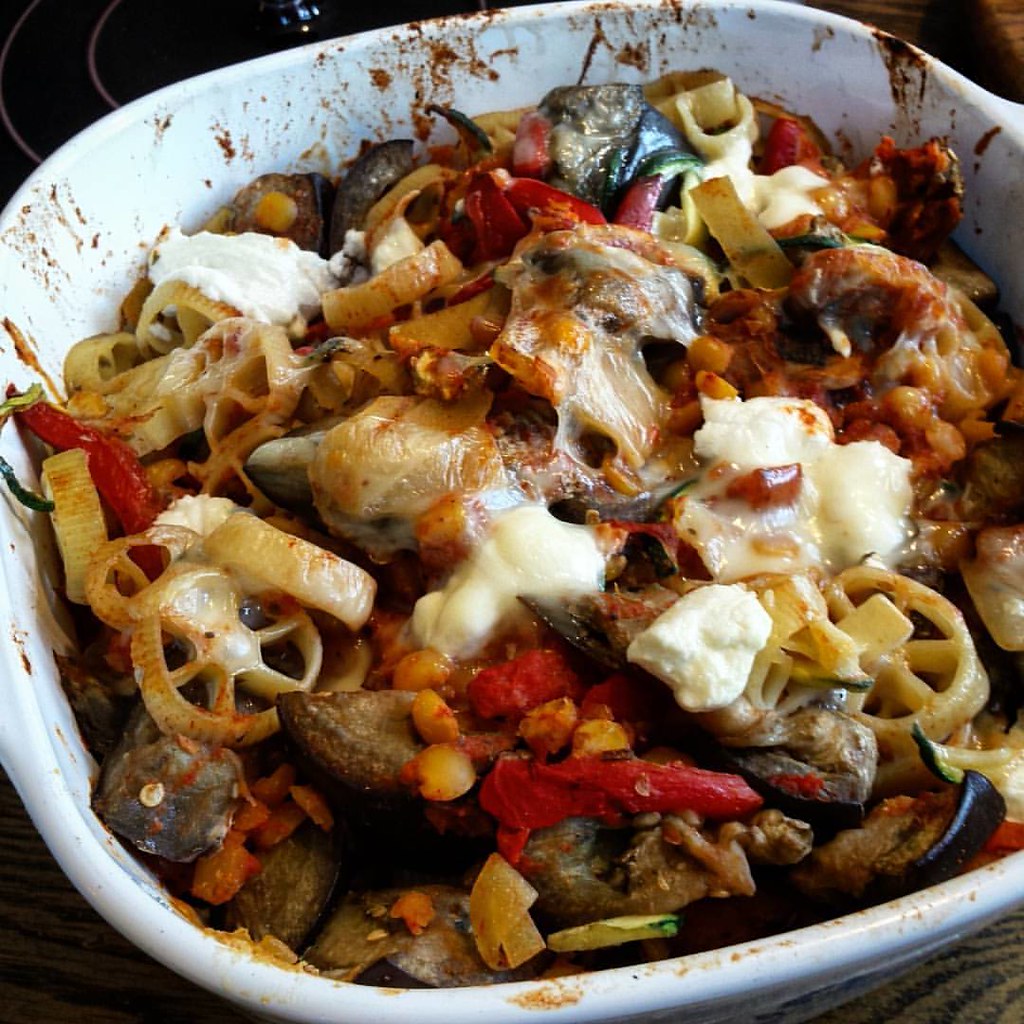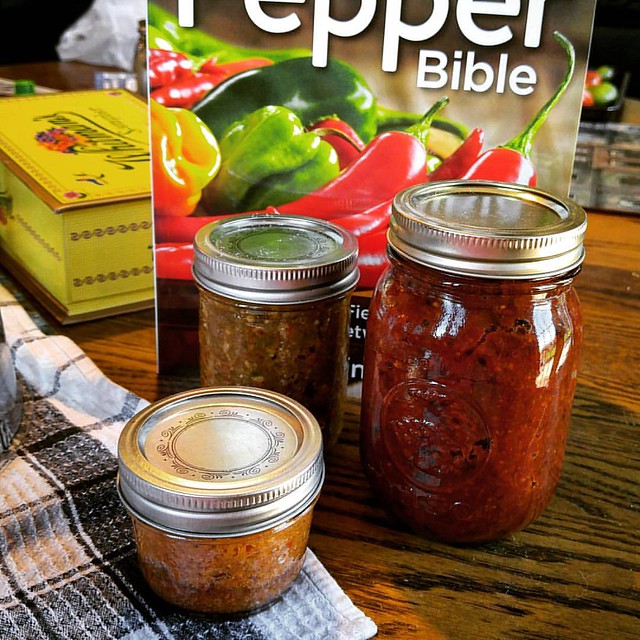 |
| Counter-clockwise, from back: Harissa, Potsticker Sauce (not from the book) and Dakkous |
The Chile Pepper Bible: From Sweet to Fiery and Everything in Between
Author: Judith Finlayson
Publisher: Robert Rose (2016)
Hot, sweet or in between – however you slice, dice, roast or pickle them, peppers are one of the most personality-packed vegetables (fruits?) out there. Whether you prefer the sweet crunch of mild, raw bell peppers in a salad or the flame of habanero hot sauce in your rice, there is at least one variety out there for everyone. I’ve been a chile-head for years, but only ever relied on prepared hot sauces or pickled peppers for my fire – aside from chili, what do you do with the spicy and moderate peppers out there? Well, author and food researcher Judith Finlayson sets out to enlighten us cooks in her book The Chile Pepper Bible.
 |
| Harissa |
Chile Pepper Bible is true to it’s name – this rather comprehensive encyclopedia / cookbook in one details information on dozens of chiles – hot and sweet – from their histories and growing regions to their Scoville units and health benefits. Once you’ve read up on the “whys” of the pepper world, the author opens the back end of the book up with 250 recipes that span the globe, from Chinese and Thai to Balkan, Indian and Mexican. The recipes include everything from appetizers to desserts, and include both meat and vegetarian main dishes as well as a wealth of sauces to use immediately or store for when the occasion demands.
I couldn’t wait to get started – and with
four hot pepper plants producing en masse in my garden (not to mention another
12 hot and sweet seedlings in my mom’s), I was spoiled for choice. My first
creation from the book was Dakkous (p. 382), an Arabian-inspired tomato sauce
flavoured not only with a hint of spicy peppers but the heady aroma of
cinnamon. The combination was unexpected but no less delicious, and I not only
used it for mixing into long grain rice but as a dipper for warmed pocketless
pitas. I can only imagine how good it would be as a simmering sauce for chicken
too. Nam Prik Num (p. 364), a Thai sauce with roasted peppers, came next –
warning, if you’re cooking the peppers indoors, use good ventilation! Watering eyes aside, the spicy, chunky sauce was
well worth it, and paired beautifully with roasted fish. I also had to try
Finlayson’s version of one of my favourites – Harissa (p.390). This one,
unfortunately, fell short of what I was hoping for (which was a recreation of
one a friend brought me from Morocco), missing the rich, slightly sweet tomato notes,
pop of sour from sumac (or lemon) and spicy garlic kick I knew. That said, when
added to a tomato-based recipe (I used it in roasted tomato and potato soup),
the flavours fleshed out somewhat and it wasn’t as obvious. I’d be interested
to see how it fared in hummus too. Piri Piri Sauce (p. 314) also fared so-so on its own, but drove a ton of flavour into plain chicken breast when used as a marinade.
 |
| Nam Prik Num |
Not relegated to face-on-fire Scotch bonnets or scorpion chiles, the world of peppers is vast, varied and full of flavours from around the globe. Judith Finlayson has done a wonderful job of opening the door for culinary adventurers in The Chile Pepper Bible, and I encourage you to step through and savour what she has to offer.
Available on Amazon

